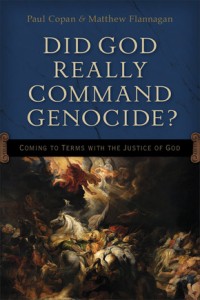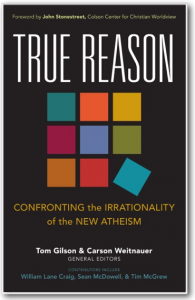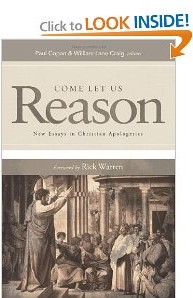Recently Madeleine was on a TV panel discussion regarding the issue of abortion and parental notification/consent which will go to air in the next week. During the ensuing dialogue Dr Paul Hutchinson, National Party Member of Parliament for Hunua, specialist in Obstetrics and Gynaecology and former member of the Abortion Supervisory Committee, raised the famous backstreet abortion argument for abortion rights. In many respects this is hardly surprising. In almost any media discussion of the issue of abortion the back-street abortion argument comes out. In Abortion: A Feminist Perspective, Susan Sherwin states, “Feminists recognise that women have abortions for a wide variety of compelling reasons.”[1] One reason she immediately cites is,
No one denies that if abortion is not made legal, safe, and accessible in our society, women will seek out illegal and life-threatening abortions to terminate pregnancies they cannot accept. Antiabortion activists appear willing to accept this cost, although liberals definitely are not; feminists, who explicitly value women, judge the inevitable loss of women’s lives that results from restrictive abortion laws to be of fundamental concern.[2]
In similar vein Dr Zoe During, former President of the Abortion Law Reform Association of New Zealand (ALRANZ), in a debate with the me, gave a paper entitled “Is Abortion Justifiable: An Examination of the Evidence”, in which she argued,
But the majority of women, poor women, have had to go to backstreet practitioners or swallow dubious potions or use knitting needles on themselves. Attempting illegal abortion by such means has always been dreadful and dangerous and greatly increased maternal mortality.
The World Health Organisation estimates that worldwide there are 20 million abortions each year, half or more being illegal, these causing up to 78,000 maternal deaths and hundreds of thousands of disabilities. A New York statistic is illuminating. For the three years before abortion became legal in that state, the maternal death ratio averaged 51 per 100,000 live births. For each of the three years immediately following legalisation it dropped to a mere 38, and there was the additional bonus of a 5% reduction in the neo-natal mortality rate. Thus not having access to legal abortion unjustifiably kills mothers and babies, while legalising abortion saves lives.[3]
During’s argument rests upon three contentions:
(a) That prohibiting feticide results in the death of women.
(b) That (a) entails that prohibiting feticide kills women.
(c) That killing of thousands of women in these circumstances is unjustifiable.
Firstly, this is an argument not to the conclusion that feticide is permissible but rather that it should not be a criminal action. The fact (if it is a fact) that there are reasons why an act should not be a criminal offence does not entail that the act is morally permissible. Strictly speaking, this argument is compatible with the position that feticide is morally wrong. However, even as an argument for decriminalisation it is unsound.
Many debates swirl around (a). As the citation shows During bases her conclusion on statistics from the World Health Organisation (WHO) and an un-referenced study about mortality in New York. These statistical claims are vigorously debated in the literature,[4] however, for our purposes this debate can be set aside. More interesting, I think, are the normative premises encapsulated in (b) and (c). If these are mistaken, the argument as a whole is unjust regardless of any merits of (a).
Regarding premise (b) During appears to think that if passing a law results in the death of large numbers of women then to pass such a law is to kill these women. This is false. It is an empirical fact that building motorways results in innocent people dying, yet it does not follow that a person who builds a road kills innocent people. It is also a fact that by allowing people to swim at beaches some people will drown yet in permitting people to swim at beaches the government cannot be said to have drowned these people. Even if it could be demonstrated that restricting feticide results in women dying it does not follow that such restrictions kill women.
During fails to distinguish between an action that foreseeably results in a person’s death and an action that causes that person’s death. Suppose that Parliament were to criminalise feticide and this led to a chain of events one of which was the death of a woman due to septic abortion. Somewhere in this chain, between the act of the legislature and the death of the woman, are the free actions of various people who choose to ignore or breach these laws. Parliament does not perform these actions; in fact they are done in defiance of Parliament’s will and hence without Parliament’s consent. Such actions include the choice of a woman to violate the law and procure an abortion and the choice of an abortionist to perform an abortion and to violate hygiene and safety standards. The death and injury that occurs is caused by these actions. It is the abortionist’s decision, acting as an agent of the woman, to perform unsafe surgery that causes the injury to occur. These facts make it evident that Parliament does not cause such deaths. The actions of the woman and abortionist are un-coerced. They are free, voluntary actions and as such not caused by someone else. It follows immediately that they were not caused by the state. If they were not caused by the state, then the effects that follow from them were not caused by the state either. The suggestion that one causes the free (and hence uncaused) reactions of others to decisions one makes is far fetched.
The failure to distinguish caused and foreseen effects is illustrated well by Augustine. In contending with the consequentialists of his day, Augustine proposed the following example. Suppose a man approaches a woman and tells her that he will kill himself if she refuses to have sex with him. Does that mean that she is a murderer if she refuses?[5]
One response to this kind of rejoinder is to claim that a woman’s choice is not free; rather it is made out of desperation and anguish. She feels compelled to abort given the psychological and economic pressures she faces. Three responses can be given to this argument.
Firstly, even if it is granted, the same cannot be said to be true of the abortionist and given that it is the abortionist’s actions that kill the woman, the fact that these are uncaused entails that Parliament cannot have caused them either.
Secondly, even if the woman’s actions were not free but caused in some way it does not follow that Parliament caused them. In some circumstances other people, such as the man’s decision to have intercourse and then to not support her or the family’s refusal to help, caused this desperation. Given that these actions are free, then Parliament cannot be held to have caused these either.
Thirdly, making the claim that a woman was not free to refuse an abortion makes this argument less plausible. Abortion is often trumpeted as a woman’s free choice. If this claim is correct then how can women be coerced into such an operation against their consent? Further, it seems odd to claim that we should legalise forced abortions.
Turning to (c), this claim is plausible only if it is true that feticide is not homicide. If feticide is homicide then to permit feticide is to permit homicide. Not only will the failure to permit feticide result in human beings dying, permitting it will also result in human beings being killed. If, as During contends, endorsing a rule that results in deaths is wrong then it will also be wrong to permit feticide.
It is worthwhile noting that the numbers of fetuses killed by legal abortion is significantly higher than the number of women killed by illegal ones. At its highest, the number of women who died from illegal abortion in New Zealand in any one year was 37.[6] The number of fetuses destroyed by legal abortion in New Zealand annually is approximately 18,000.[7] Moreover, according to the stats During cited from WHO, there are around 10 million legal abortions per year and 78,000 deaths resulting from illegal ones.[8] If we follow the argument During offers, then we are permitting the killing of 10,000,000 human beings per year to avoid killing 78,000 human beings.
During’s argument in favour of feticide is sound only if feticide is not homicide. However, if feticide is homicide she is arguing that in order to prevent thousands of people from harming themselves we should kill millions of people; a claim that on the face of it is absurd.
This absurdity is not unique to During; the same thing can be said about the arguments offered by Sherwin and Hutchinson.
[1] Susan Sherwin “Abortion a Feminist Perspective” in Ethical Issues in Modern Medicine ed Bonnie Steinbock & John D. Arras (Mountain View CA: Mayfield Publishing Co, 1999) 361.
[2] Ibid.
[3] Zoe During “Is Abortion Justifiable?” New Zealand Rationalist Humanist Spring (1999) 10-11.
[4] The debates on this issue are documented in Francis Beckwith Politically Correct Death: Answering the Arguments for Abortion Rights (Grand Rapids MI: Baker Books, 1993) 54-59.
[5] Augustine On Lying 9.
[6] Wayne Facer Criminal Abortion in New Zealand: Public Health Consequences; this study was distributed by the Abortion Law Reform Association of New Zealand in the 1970’s. Facer was an outspoken proponent of decriminalising abortion.
[7] New Zealand Abortion Supervisory Committee Report 2008.
[8] These figures are not current.
RELATED POSTS:
Is Abortion Liberal? Part 1
Is Abortion Liberal? Part 2
Sentience Part 1
Sentience Part 2
Viability
Abortion and Child Abuse
Abortion and Brain Death: A Response to Farrar
Abortion and Capital Punishment: No Contradiction
Imposing Your Beliefs onto Others: A Defence
Boonin’s Defense of the Sentience Criterion: A Critique Part I
Boonin’s Defense of the Sentience Criterion: A Critique Part II
Tags: Abortion · Backstreet Abortion · Feticide · Paul Hutchison · Susan Sherwin · Wayne Facer · Zoe During6 Comments


 A common objection to belief in the God of the Bible is that a good, kind, and loving deity would never command the wholesale slaughter of nations. In the tradition of his popular Is God a Moral Monster?, Paul Copan teams up with Matthew Flannagan to tackle some of the most confusing and uncomfortable passages of Scripture. Together they help the Christian and nonbeliever alike understand the biblical, theological, philosophical, and ethical implications of Old Testament warfare passages.
A common objection to belief in the God of the Bible is that a good, kind, and loving deity would never command the wholesale slaughter of nations. In the tradition of his popular Is God a Moral Monster?, Paul Copan teams up with Matthew Flannagan to tackle some of the most confusing and uncomfortable passages of Scripture. Together they help the Christian and nonbeliever alike understand the biblical, theological, philosophical, and ethical implications of Old Testament warfare passages.





A pointlessly arcane straw-man argument. No one is suggesting that abortion should be legal simply because it will lessen the harm caused by illegal abortions.
As you could have pointed out in a single paragraph, that is at best a self-serving argument.
The problems of illegal abortion are just another factor to weigh up when considering the merits or otherwise of legalised abortion. It matters not that illegal abortion doesn’t directly harm women, as you have noted, but as a consideration it is sufficient to know that dangerous illegal abortions occur when there is no legal alternative.
No one is suggesting that abortion should be legal simply because it will lessen the harm caused by illegal abortions.
Here we disagree, I have heard people argue precisely this on numerous occasions. I attended a presentation by a member of the abortion supervisory committee where this argument was put forward , was on a TV show where the journalist pushed this line of argument. The argument has been noted in the literature by people like Mary Anne Warren, Peter Singer, ( who notes it is highly influential and advocated by the Candian Royal Commision) Baruch Brody, Frank Beckwith and numerous others.
but as a consideration it is sufficient to know that dangerous illegal abortions occur when there is no legal alternative.
Well the figures don’t necessarily support this claim ( the figures actually show that “dangerous” illegal abortions began to decline a long time before decriminalistion and had almost ceased by the time the law had changed) but even if they did, this fact by itself is of no relevance. We know that dangerous illegal driving occurs when we build highways, no one thinks this proves anything about the morality of highways. Much more is needed to get a sensible ethical conclusion.
.-= My last blog-post ..Religious Restraint and Public Policy: Part I =-.
Here we disagree, I have heard people argue precisely this on numerous occasions…
OK, well they shouldn’t 🙂 It’s a silly argument as you have pointed out. At best it should be presented as a positive consequence of legalised abortion.
The appeal of this ‘argument’ is obvious. It’s superficially convincing for many and avoids the advocate of abortion having to advance the core belief; that a foetus is something of less value than a baby or a child.
Well the figures don’t necessarily support this claim ( the figures actually show that “dangerous” illegal abortions began to decline a long time before decriminalistion… Much more is needed to get a sensible ethical conclusion.
OK, I’ll take your word. Clearly there are many factors which could have caused the decline (e.g. legal abortion available in neighbouring country (UK, Ireland for example), practice leading legislation, customers of illegal abortion becoming better informed and seeking out a better service, etc).
It’s pointless trying to corner people on a morality argument, as there’s no absolute morality. If you believe that abortion up to a certain period is OK, and you’re honest with yourself about what that means for the status of a foetus, then you won’t be convinced by someone pointing out an inconsistency in your morality. Your morality is defined with that inconsistency built-in. Of course some people believe that their morality is based on an absolute morality and they would be responsive to such an approach. But those people probably don’t need convincing anyway.
Thanks for replying.
cheers
Malcolm
Philosophical Errors in Back-Street Abortion Argument…
Dr Matthew Flannagan, a New Zealand based Ethicist who researches and publishes on issues around feticide (the killing of fetuses), wrote this very accessible critique demonstrating philosophical errors of reasoning in the backstreet abortion argument….
[…] from the sincere advocate of a woman’s right to have her baby killed by abortion. In his latest article, Dr. Matthew Flannagan discusses the flaws in the famous backstreet abortion argument for abortion […]
[…] Viability Abortion and Sentience Part I Abortion and Sentience Part II Abortion and Brain Death Illegal “Backstreet” Abortion Abortion and Child Abuse Is Abortion Liberal? Abortion and Capital Punishment: No Contradiction […]